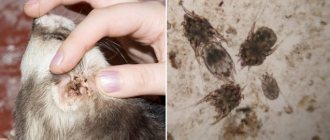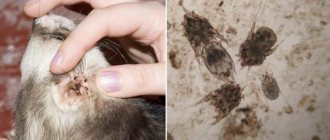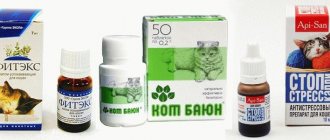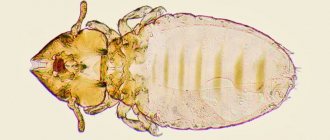After the operation, leave the cat at the clinic or take it home
After the operation, the animal will gradually recover from the state of anesthesia. This happens individually for everyone: depending on the type of drug chosen, how the operation went, age and individual characteristics of the body. Now it will be important to observe the animal and monitor its condition. It would seem that there is nothing better than leaving the animal under the supervision of specialists in the clinic. There are many advantages, but there are also disadvantages.
The main advantage of leaving your pet in the clinic after surgery is the presence of specially trained staff. If necessary, they will be able to provide pain relief, give a pill, and treat the stitch properly. You don't have such skills. This is especially true for pets who are not in good health or are of an advanced age (more than 7 years). There are also situations in which sterilization must be carried out during estrus or pregnancy. This complicates the operation itself and, as a consequence, postoperative care. In this case, there is no need to transport the animal home. In cold weather this is dangerous due to hypothermia.
All this is good, but there are quite important disadvantages: the animal will experience extreme stress while in a cage, in an unfamiliar place with strangers. In the clinic, the animal will be close to other animals and there is a risk of contracting an infection. Vaccinations only protect against 15% of viruses. Take care of the reliability of the clinic: look at reviews and information on the Internet. Don't chase a lower price. The staff really must be qualified and fulfill all instructions on time. Be sure to comply with temperature standards and avoid drafts. Your pet really needs to be looked after and fed properly. After all, you will pay a lot of money for this. And one more important point: the animal feels resentful that you left it in such a difficult period.
Sterilization or castration?
First of all, the owner of the animal must decide what to do: sterilization or castration. These two procedures are different from each other. During sterilization, the ovaries are removed or the uterus is removed, but the ovaries are not touched. With this operation, estrus continues, but kittens do not appear. The animal's hormonal environment subsequently becomes unstable, and even in rare cases pregnancy is possible.
Castration is the removal of the uterus and ovaries. In this case, the production of estrogen stops, and hormones after such an operation become more stable because the adrenal glands are involved in the production of hormones.
How does the operation work?
During the operation, the animal is under general anesthesia. Seam position may vary. It may appear as a white line on the abdomen or as a small dot on the side. In the first case, such a suture is applied in the presence of inflammation. In the second, the operation is performed with early castration. The second operation is much simpler. In any case, the incision site must be treated constantly.
How to care for a cat during the recovery period
Most often, the animal is given away while still in a state of narcotic sleep. It is necessary to have a special collar or postoperative blanket (bandage). These remedies will protect the animal from licking the seam and you from being bitten (especially if it is prone to aggression).
Check with your doctor to see if pain relief was given and details of how best to care for your cat after sterilization. Wait at the clinic for about half an hour and make sure that the stitch is not bleeding.
Provide your pet with soft and warm transportation. You can cover it with a blanket and put a bottle of warm water or a heating pad under your back. The animal must be placed strictly on its right side on a hard surface. Place an oilcloth under the bedding - the animal does not control urination.
Upon arrival home, protect the purr from high objects and under no circumstances place it on a hill (bed, chair). After anesthesia, coordination of movements is impaired, the animal may fall and injure itself. You can leave it in the carrier if it is spacious and will not cause inconvenience to the animal. Comfortable temperature is 22-24 degrees. It is enough to leave it covered with a blanket and, if it shakes, put on a heating pad. There is no need to place animals near heating devices.
Turn your pet from one side to the other every half hour. At the same time, you can gently close your eyelids and lightly massage your eyeballs. During anesthesia, cats' eyes remain open. Cats tolerate anesthesia with their eyes open. This way you will avoid them drying out. You can use eye drops or lens solution.
You can give an anesthetic injection if this has not been done before. Tablets cannot be used at this stage, since there are no swallowing reflexes and the animal may choke. It is difficult to predict how a cat will behave after sterilization as it comes to its senses. The cat may exhibit temporarily uncharacteristic behavior and a desire to take off what it is wearing. This is not worth doing. Just leave her alone and within a couple of days she will get used to everything.
There will most likely be no appetite on the first day. When caring for a cat after sterilization at home, it is necessary to ensure proper nutrition. Due to this, you may urinate less than usual in the first days. The intestines are working poorly now, so constipation is possible. If your cat does not go to the toilet for 3 days, you should consult a doctor. It is not recommended to do an enema yourself, but Vaseline oil can be used as a laxative. In the veterinary pharmacy its name is “Bimin”, calculated on the basis of 5 ml per 5 kg of weight. Given orally (by mouth), every 8 hours.
Monitor your pet's temperature; in the first days it can reach up to 39.5 C. If this temperature, as well as drowsiness and apathy, persist for more than 5 days, contact the clinic immediately.
When can I bathe?
It is permissible to wash a cat after sterilization, regardless of the methods used, no earlier than the stitches are removed. Bathing is stressful for the animal and risks causing pain and infection. If the seam becomes dirty for some reason, it is washed with a gauze swab soaked in antiseptic.
The need to wash a cat arises if the fur becomes wet due to involuntary urination. But even here, experts recommend using dry shampoo. In this case, you must not allow the product to get on the wound.
Painkillers for cats
Veterinarians have different opinions regarding the rationality of using painkillers. Some believe that this way the animal will move less and protect itself. Others argue that if everything went well during the operation, then the movement will not cause harm. Moreover, the cat will not be able to be too active in a bandaged blanket.
The first couple of days are the hardest and most painful for your pet. The cat cannot say this, but only lies motionless and refuses to eat. He behaves tensely and can even show aggression.
Without a doubt, each individual is individual. If it is not clear that anything is bothering the cat and there is an appetite, then you can refuse painkillers. This means your animal has a higher pain threshold. This has been observed in British and Persian cats.
Drugs designed for humans are not suitable for animals. Proven products are “Ketofen” and “Ainil” (active ingredient ketoprofen), “Tolfedin”, “Previcox”. These are mainly tablets and injection solutions. In the form of a suspension there is “Loxicom” (meloxicam). Read the instructions for dosage and frequency of use, or better consult your doctor. Usually painkillers are given for 3-5 days.
Signs of pain
Usually cats tolerate pain patiently, but in some cases it is a signal for an urgent visit to the veterinarian.
Signs that your cat is in pain:
- unusual behavior: excessive activity or lethargy;
- unjustified aggressive reactions;
- lack of appetite;
- desire for solitude;
- uncharacteristic apathy and drowsiness;
- refusal of the litter tray;
- drooling and vomiting;
- cardiopalmus;
- heavy or difficult breathing, shortness of breath.
Postoperative suture care
Check the seam after your cat is sterilized. Blood leaks in the form of a few drops and the release of ichor are allowed (it is more watery than blood). Large bleeding is not normal - consult a doctor. The suture may appear red and swollen. The presence of a seal may be felt to the touch - this is the body’s reaction to the threads. There is no need to do anything, everything will resolve itself within a month.
Sutures are treated only as directed by a doctor and 1 hour after taking painkillers. This is done 2-3 days after surgery at the frequency indicated by the doctor. The treatment consists of wiping the seam and all its parts with an antiseptic (chlorhexidine, miramistin). If necessary, you can use Levomekol ointment. It is more convenient to carry out procedures when the animal stands on its hind legs. When using aluminum frame, the need for processing disappears.
Assess the condition on day 5. The cat’s seams after sterilization should be dry, and the edges should meet (1 mm error). There may be threads peeking out from the seam. The seam may also be uneven, this will go away when the remaining threads are removed and it will resolve. Completely closes the seam in 10-12 days.
If on the 5th day you see that the incision remains wet, the swelling and redness have not gone away - these are signs of postoperative complications. Contact the clinic immediately.
Modern veterinary clinics practice the use of self-absorbable threads. In this case, re-application is not required. The cosmetic suture dissolves on its own. In the case of regular threads, the surgeon will tell you when to come to the clinic (usually after 7-10 days). You can ask to do this at home and clarify the details.
Throughout the recovery period, you need to ensure that the cat does not remove the blanket. Otherwise, she will begin to lick the seam, and this threatens to cause infection.
How long does it take to recover from anesthesia?
The condition and behavior of the cat depends on the type of anesthesia. Intramuscular anesthesia is mainly used (an injection is given).
Before sterilization, the cat should not be fed for several hours, otherwise it will vomit severely when anesthesia is administered. The recovery time from anesthesia depends on many parameters, including the weight of the animal, age, and general health. On average, it can range from two hours to a day.
The cat will periodically wake up, wander around the house, and then go back to sleep in the place where it is. And so on for a long time until the anesthesia wears off.
What do veterinarians advise for care?
When it comes to caring for a cat after sterilization, veterinarians’ advice boils down to the following points:
- Clean the tray after each visit. During the recovery period, it is better to make do with pieces of paper.
- Strictly exclude any water procedures. During this period, use wet wipes. You can bathe after the seam is completely closed.
- It is necessary to isolate the cat from other relatives and especially dogs.
- Monitor her bouts of activity - this threatens the sutures coming apart.
- No antibiotics are required. The surgeon gives one injection during the operation.
- If the operation was carried out as usual and the animal is in good health, then the use of vitamins is not required.
- Hemostatic drugs are needed only in case of poor blood clotting.
- Veterinarians advise getting a preventive vaccination. Especially if you are planning to have surgery in a clinic.
Advantages and disadvantages of inpatient monitoring
Most veterinary clinics provide the opportunity to leave the animal after surgery while it comes out of anesthesia or for a few days before the stitches are removed. This useful service has not only advantages, but also disadvantages.
Positive factors include the following:
- prevention of hypothermia of the animal during transportation, especially in the cold season;
- Saving time for busy owners to care for their pet;
- preventing the development of complications due to improper care;
- ensuring qualified management of the animal after surgery, which is especially important in the presence of pathologies.
Disadvantages of inpatient monitoring:
- a stressful situation for an animal in an unfamiliar environment;
- lack of guarantees regarding the conscientious performance of their duties by employees and a friendly attitude towards the cat;
- high cost of keeping a pet in the clinic.
"Codeine"
“What painkiller can I give to cats?” – Are you still asking yourself this question? In some cases, doctors may prescribe Codeine, which is commonly classified as a derivative of methylmorphine. If we compare it with the previously described narcotic analgesics, it does not have such a strong effect, however, it does not have serious contraindications. It only relieves pain of moderate severity.
However, Codeine can provoke an aversion to food and certain objects from the environment, as a result of which the cat may vomit and experience nausea from time to time. Available in the form of pills and injection solutions. The average cost of such a drug varies around 1,500 rubles. A package usually lasts for a month. However, veterinarians extremely rarely prescribe this drug for cats.
"Tramadol"
Looking for a powerful pain reliever for a cat with cancer? Most veterinarians prefer to use Tramadol injections in this case. In rare cases, this drug may be prescribed for severe bruises or fractures of several limbs at once. The product is quite effective, but has an extensive list of side effects: drowsiness, diarrhea, vomiting, nausea, and so on. Use only after consultation with a veterinarian!
The effect of the narcotic drug is 6 hours, so at least 4 ampoules will be required per day. Such packaging will cost about 150 rubles. The course of treatment is usually several months. It should also be understood that Tramadol only eliminates unpleasant symptoms, sometimes even just muffling them. The remedy will be useless in the treatment of serious diseases. So it is used exclusively as an analgesic.









